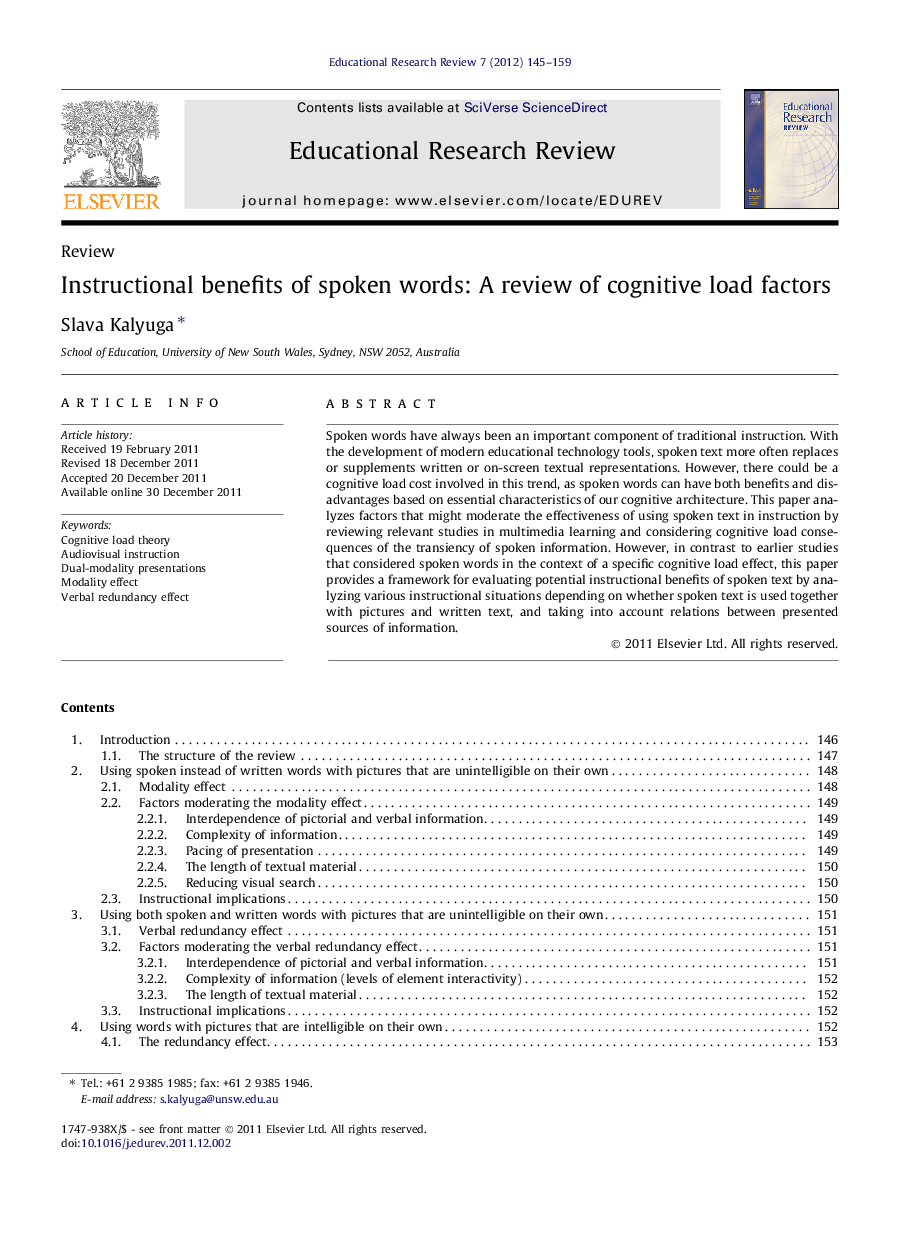| Article ID | Journal | Published Year | Pages | File Type |
|---|---|---|---|---|
| 355199 | Educational Research Review | 2012 | 15 Pages |
Spoken words have always been an important component of traditional instruction. With the development of modern educational technology tools, spoken text more often replaces or supplements written or on-screen textual representations. However, there could be a cognitive load cost involved in this trend, as spoken words can have both benefits and disadvantages based on essential characteristics of our cognitive architecture. This paper analyzes factors that might moderate the effectiveness of using spoken text in instruction by reviewing relevant studies in multimedia learning and considering cognitive load consequences of the transiency of spoken information. However, in contrast to earlier studies that considered spoken words in the context of a specific cognitive load effect, this paper provides a framework for evaluating potential instructional benefits of spoken text by analyzing various instructional situations depending on whether spoken text is used together with pictures and written text, and taking into account relations between presented sources of information.
► This review provides a framework for evaluating benefits of spoken text by appropriately classifying instructional situations. ► This review analyzes cognitive load factors that moderate the effectiveness of spoken text in instruction. ► This review focuses on the transiency of spoken information as a new cognitive load factor in instructional design.
